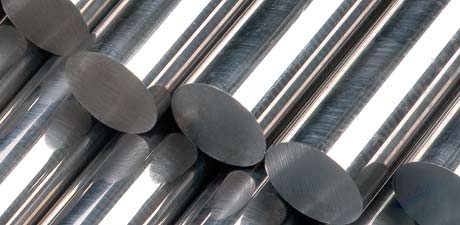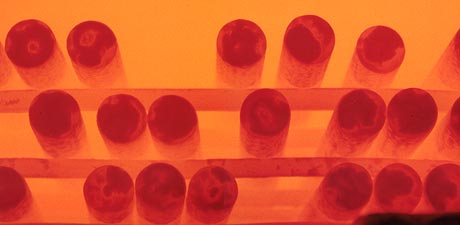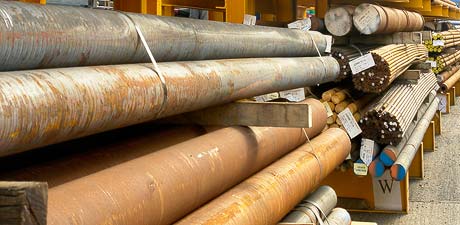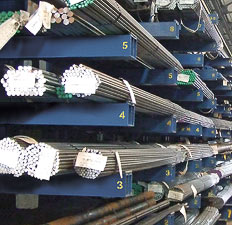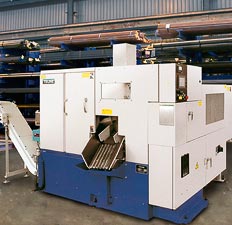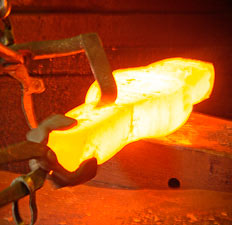Technical Data
Metallurgical Terms
Energiser.
A substance added to carburizing mixtures to accelerate the carbon case hardening process. The energisers most generally used are barium or sodium carbonates whose action is similar to a catalyst. It is believed that the energiser provides carbon dioxide, which in turn reacts with incandescent carbon to form an additional supply of carbon monoxide.
Equiaxed Crystals.
Crystals whose axes are approximately equal. They form in the centre of an ingot where the temperature gradient is not steep enough for marked directional crystallization to take place.
Equilibrium Diagram.
(Constitutional Diagram). A diagram constructed from thermal and other data showing the limits of temperature and composition within which the different constituents and phases of the alloy system in question are stable. From this, the changes of structure and the composition of the constituents in equilibrium at any specified temperature can be determined.
Erichsen Test.
A cupping test, using a tool with a spherical end of 20mm diameter to deform the test sheet, which is held between annular jaws of 27mm internal diameter. The tool is pressed into the metal until a crack appears in the cup, and the depth of cup in mm at this instant is taken as a measure of the ductility of the metal and is known as the Erichsen number.
Etching.
A process of revealing the structure of metal by selective chemical attack of the structure. This is rendered possible by the differently orientated crystals having different rates of solution in the etching reagents.
Etching Pits.
Small cavities formed on the surface of metals during etching.
Eutectic.
A mixture of definite composition, consisting of two or more constituents, which solidify simultaneously out of the liquid at a minimum freezing point. This point occurs at the intersection of two descending liquidus curves in a binary system or three descending liquidus curves in a ternary system.
Eutectic Change.
The transformation from the liquid to the solid state in a eutectic alloy. It involves the simultaneous crystallization of two constituents in a binary system and of three in a ternary system.
Eutectic Point.
The point in the binary or ternary constitutional diagram indicating the composition of the eutectic alloy, or mixture of minerals, and the temperature at which it solidifies.
Eutectic Structure.
The characteristic arrangement of the constituents in a eutectic resulting from their simultaneous crystallization from the melt.
Eutectoid.
A mixture of two or more constituents which forms simultaneously on cooling from a solid solution and transforms again on heating, e.g., pearlite. The essential difference between the eutectic and a eutectoid is that the eutectic is formed from the melt whereas the eutectoid is formed from a solid.
Eutectoid Steel.
Steel having the same composition as the eutectoid point in the iron-carbon system (0.83% carbon), and which, therefore, with suitable cooling conditions consists entirely of pearlite at temperatures below 710° C.
Exfoliation.
(See Spalling).
Exothermic Powder.
(See Feeder Head).
Extensometer.
An instrument for measuring minute extensions of the test piece during a tensile test. This is necessary when determining the Limit of Proportionality or Proof Stress.
Extrusion.
The application to a relatively massive billet or blank, of sufficient pressure to cause the metal to flow through a restricted orifice, thereby forming a greatly elongated section. In hot extrusion, the metal is above its recrystallization temperature and thus continuously recrystallizes and is not work hardened during the process. In cold extrusion, the metal does not reach the temperature of recrystallization and may, therefore, be considerably work hardened by the process. In the production of seamless tubes a hot billet is forced to flow through a die over a mandrel positioned centrally in the die.
- < Previous
- 1
- 2


